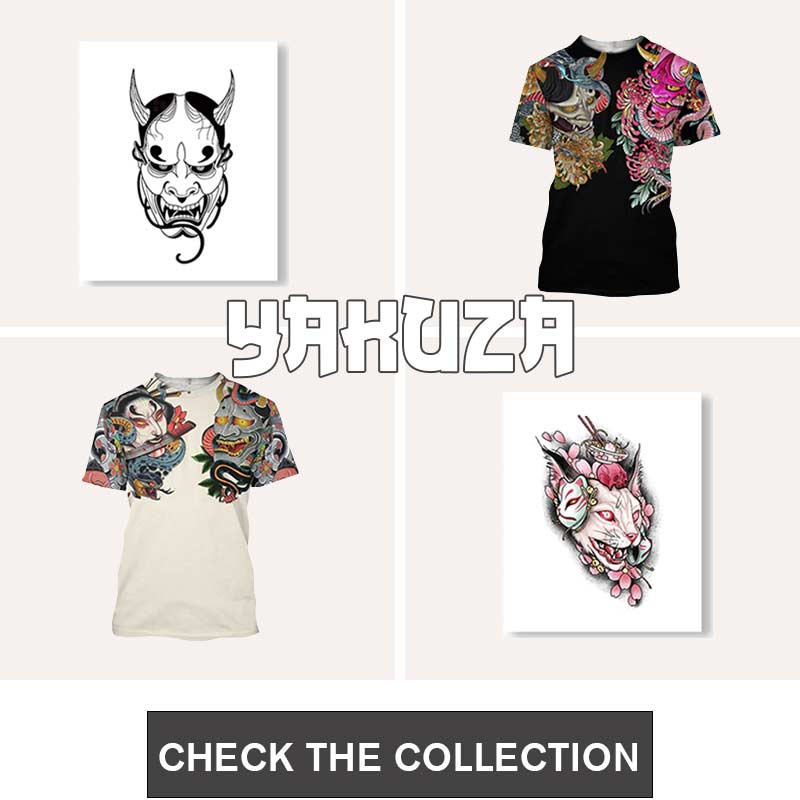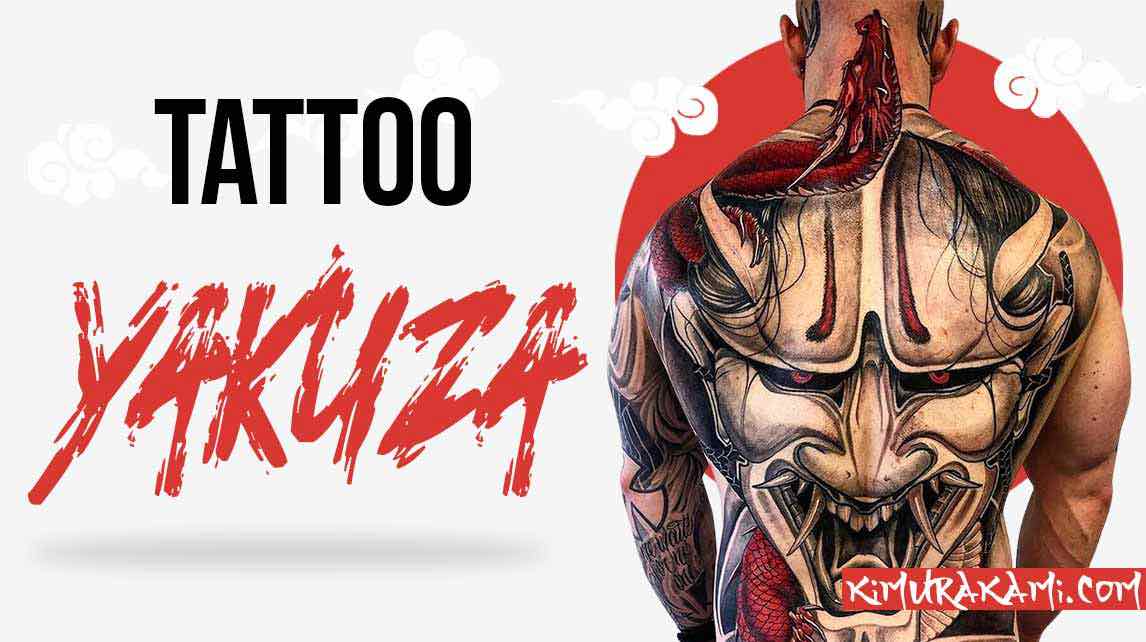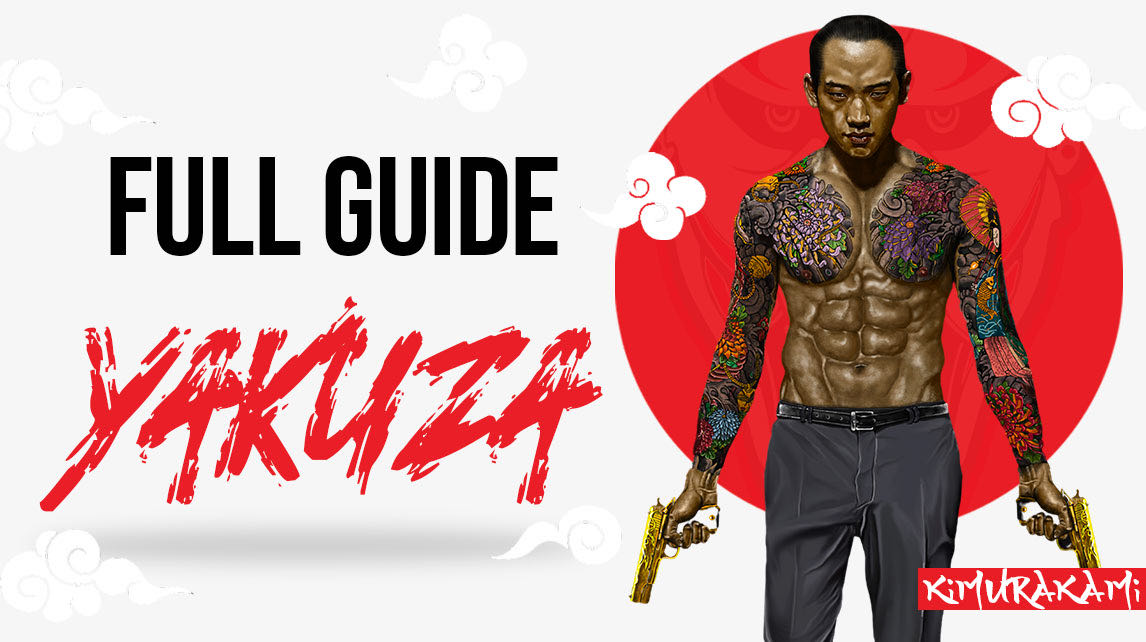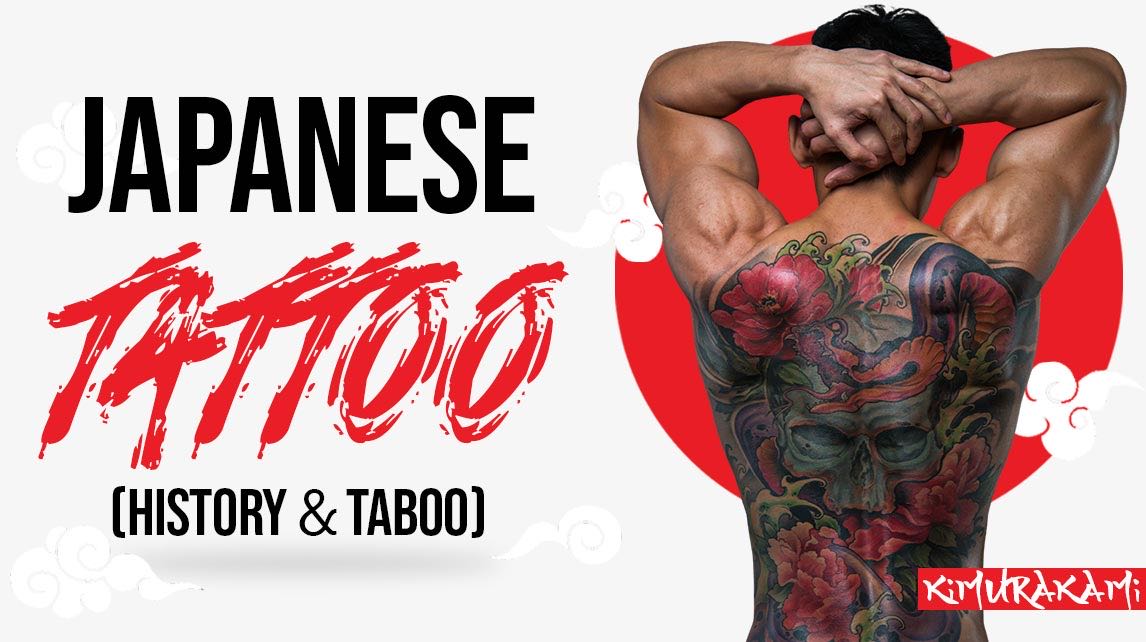In Japan, tattoos have a very bad image because they are associated with the yakuza mafia. In the United States and throughout the rest of the world, people proudly show the beauty of their tattoos. In the land of the rising sun, they use to hide them. However, this ancestral Japanese art is still linked to Japanese history and japanese culture for centuries.
Japanese traditonal tatoos comes from prehistoric times, the first Japanese civilizations practiced mystical rituals tattoos. Japanese tattooed persons obtained spiritual powers and protection thanks to it.
It was also also a symbol of belonging. Then, tattooing became a punishment for criminals. Nowadays, yakuza members are sometimes tattooed from head to toe. Japanese Tattoo art is a symbol of strength and courage! Japanese tattoo artists are considered as very talented all over the world!
The tattoo subject of tattooing is complex in Japanese society. In order to understand the importance of this Japanese art, we will see in this article :
- The origins of Japanese tattoo
- Tattoos during the Edo period
- The prohibition of Japanese tattoo
- Yakuza tattoos
- The meanings of tattoos
- The irezumi tattooers
- Japanese tattoos in Japan
So let's start right away by discovering the history of Japanese tattooing
The Japanese Tattoo Origins
 Ainu women with japanese face tatoo
Ainu women with japanese face tatoo
The history of the first traditional Japanese tattoos goes back to the Jomon period during prehistory! Clay statuettes have been found with tribal symbols!
1. Ainu Tatoo
The first tattooed people in the Japanese archipelago were the women of the Ainu tribe. It is an aboriginal tribe of fisherman and hunter. The tattoos showed their social rank. For the Aïnu women, it was also a sign of beauty. Women tattooed their face (around the lips) and also their arms at the beginnig of their adolescence and during traditional ceremonies! They wanted to indicate if they were married or not !
2. Traditional Japanese tattoo
When Chinese explorers first discovered the Ainu on the Japanese islands, they described these rites as barbaric!
Until 1870, to punish Japanese prisoners, they were branded with red iron on the forehead and then on the arm with some symbols. It is for these multiple reasons that the tattoo is historically badly seen. Japanese people turned away from tattooing to devote themselves to the fashion of clothing and perfume.
Tattoos during Edo Period
 On the left Japanese print ukiyo-e Tsûzoku Suikôden, Utagawa Kuniyoshi draws some of the outlaw heroes and notably Zhang Shun. On the right Japanese tattoo by Kusakabe Kimbei
On the left Japanese print ukiyo-e Tsûzoku Suikôden, Utagawa Kuniyoshi draws some of the outlaw heroes and notably Zhang Shun. On the right Japanese tattoo by Kusakabe Kimbei
1. Bad image of the tattoo
During the Edo era, tattooing still has a bad image because in the big cities there is an increase in the number of criminals. The bandits camouflaged their tattoos of prisoners under large traditional Japanese clothes. Orian (prostitutes) also tattooed their bodies for aesthetic purposes. For these two reasons this Japanese art still has negative connotations today!
2. Japanese Heroes Tattoo
However in Japanese folklore and novels, some great heroes are totally tattooed. The tattoo symbolizes the strength, courage and masculinity of the heroes. In Shui hu zhuan's illustrated novel "By the Water", the heroes are Japanese warriors fully tattooed. This book is the best seller of ancient Japan. The elegant Japanese motifs of these heroes inspired Japanese literature and art.
3. Art of tattoo
The Kabuki theater and Ukyo-e artists have improved the image of tattooing in the Japanese archipelago. During the Edo period, there were a lot of Koi carp, tiger, dragon, kami, yokai or oni engravings on Japanese prints. Each Japanese symbol had a special meaning!
The popularity of Ukyo-e combined with the improvement of engraving techniques combined with the popularity of Ukyo-e art improved the image of the tattoo. Thus, Japanese tattoo has become popular in several types of trades such as: couriers, workers and firemen. They were considered as heroes of the daily life.
4. Japanese dragon tattoo
The popularity of dragon tattoos comes from the workers of the Edo period who were called Tobis. They were workers who worked on the roofs of houses. They often worked shirtless, as climbing up to the top of houses with their bare hands was very tiring. They were very popular. They had large dragon tattoos. The dragon is a sign of courage in the land of the rising sun. The popularity of the tattoo allowed the creation of a new type of profession: artist-tattooist horishi!
Prohibition of Japanese Tattoo
 Japanese men with samurai tattoo style
Japanese men with samurai tattoo style
During the Edo era, Japan practiced an isolationist policy called Sakoku. This policy of isolation did not allow any foreigners to come to Japan. But during the Meiji period, Japan opened its borders. In order to have a good image with westerners, the emperor banned the practice of tattooing in 1872. The Japanese had to hide their tattoos for kimono and other traditional clothes!
Tattoo artists had to hide the nature of their profession. Tattoo artists were known all over the world for the quality of their style. After World War II and during the American occupation, tattoos were legalized again. But Japanese tattoo artists are associated with yakuza gangsters!
Yakuza Tattoo
 Traditional Yakuza tattoo
Traditional Yakuza tattoo
The ancestors of the Yakuza were the Bakuto. It was a guild of players who influenced certain Yakuza rituals such as yubitsume (cut finger) and tattoos. The Bakuto tattooed a black circle on themselves when they committed a crime. The purpose was to spread fear and dread.
The Yakuza used this concept in their own initiation rite. This practice is called Irezumi. This tattoo technique is very painful. The master tattooist uses a bamboo. Each Yakuza clan has its own style of tattoo. The japanese tattoo ritual symbolizes the belonging to the clan and the loyalty to the yakuza chief. Doing a full irezumi tattoo is very painful, you have to tattoo your arm, back, legs, bust, buttocks. You need a lot of courage, and you have to know how to resist to the pain!
Japanese Tattoo Meaning
 Japanese tattoo and meaning just below
Japanese tattoo and meaning just below
Here is the meaning of the 8 most popular Japanese symbols
🐟 Japanese koi carp tattoo meaning: perseverance and luck. If you want to learn more about it, please have a look to our blog article on this magical japanese fish
🐲 Japanese Dragon tattoo meaning: courage and protection in the face of danger: the dragon
🗡 Samurai tattoo meaning: loyalty and honor
🐅 Japanese tiger tattoo meaning: longevity and strength
👹 Japanese oni tattoo meaning: Japanese demons like hannya. They symbolize revenge. Oni are also called Yokai demon.
🦅 Japanese phoenix tattoo meaning: immortality and glory
🌸 Sakura tattoo meaning: the cherry blossom symbolizes the ephemeral beauty of life
🐍 Meaning Japanese Snake tattoo meaning: it's a sign of good health and power
Irezumu tattoo artist
Each master has his own surname. The word hori (which translates as engraving) is added at the end of his artist's name. There are certain rules to follow to become an Irezumi tattoo artist. But first of all, let's see what an irezumi tattoo means !
1. What is Irezumi?
Irezumi is the traditional Japanese style of tattooing which consists of covering a large part of the body and sometimes the entire body. The designs stop at the ankle and wrist so that tattoos can be hidden under clothing. Yakuza leave an untattooed line between the torso and the navel. Traditionally the line was used to hide tattoos under a Japanese Kimono.
The tattoo tool used by the artist is called a tebori. It is a bamboo stick with a needle at its end. The tips are impregnated with a black ink called: Black Nara. This ink has a green-blue color. The ink is incised by the tattooist by pricking point by point under the skin repeatedly.
2. Price irezumi tattoo
 Traditional irezumi tattoo and artist
Traditional irezumi tattoo and artist
A traditional Irezumi tattoo is very expensive... The price for a full tattoo can cost 30000 euros. Some tattoo designs are very long to realize (sometimes 4 years). The technique of the dermograph is less precise for shadows and gradations but it is faster that the traditional tattoo method !
Before filling with tebori, the tattooist traces the contours with the machine over many sessions. The patterns are inspired by Japanese mythology identical to that of the Edo period. The work of the shadow is magnificent. The practice of Irezumi follows strict rules for the colors, style and techniques of tattooing. The tattoo artist always signs his work!
3. Irezumi tattoo training
A Japanese master tattooist trains an apprentice for years. The apprentice prepares the inks, he handles the tools. He practices drawing his mentor's designs throughout his apprenticeship. He learns and observes the different traditional tattoo techniques. When he is ready to practice, he is allowed to bear a name derived from his master's when he is ready to become a Japanese Irezumi! tattooist.
Is tattoing in Japan is legal?
 Japanese tattoo are sometimes prohibited
Japanese tattoo are sometimes prohibited
The job of tattooist is difficult because the regulations are unclear. The art of tattooing is not valued in Japan.
1. Japanese anti-tattoo law
In 2001, the state passed a law stating that only doctors are allowed to inject ink under the epidermis. Tattoo parlors are illegal, and authorities arrest tattoo masters. This is why the art of tattooing is clandestine in Japan. Many Japanese tattoo artists prefer to settle abroad!
2. Having a tattoo in Japan
Small, discreet tattoos are well perceived among young Japanese people. Western tattoos with tribal forms have a good image. However the big tattoos are associated with the underworld and the Yakuza mafia... In the working business world, it is sometimes badly seen to have a tattoo.
Are tattoo allowed in Japanese onsen? The answer is often: NO. And it's also the case in for some public bath, swimming pool where tattooed people are forbidden. Tattooed people in certain public places are not welcome as you can can see in the previous picture !
At KimuraKami, we think that Japanese tattoo is an incredible art. That's why some of our clothing collections are inspired by this authentic Japanese art. If you are not ready to get tattooed we invite you to have a look at our Japanese t-shirt, Japanese hoodie or haori collections. Our traditional and streetwear clothing are inspired by Yakuza and Irezumi style !







Leave a comment